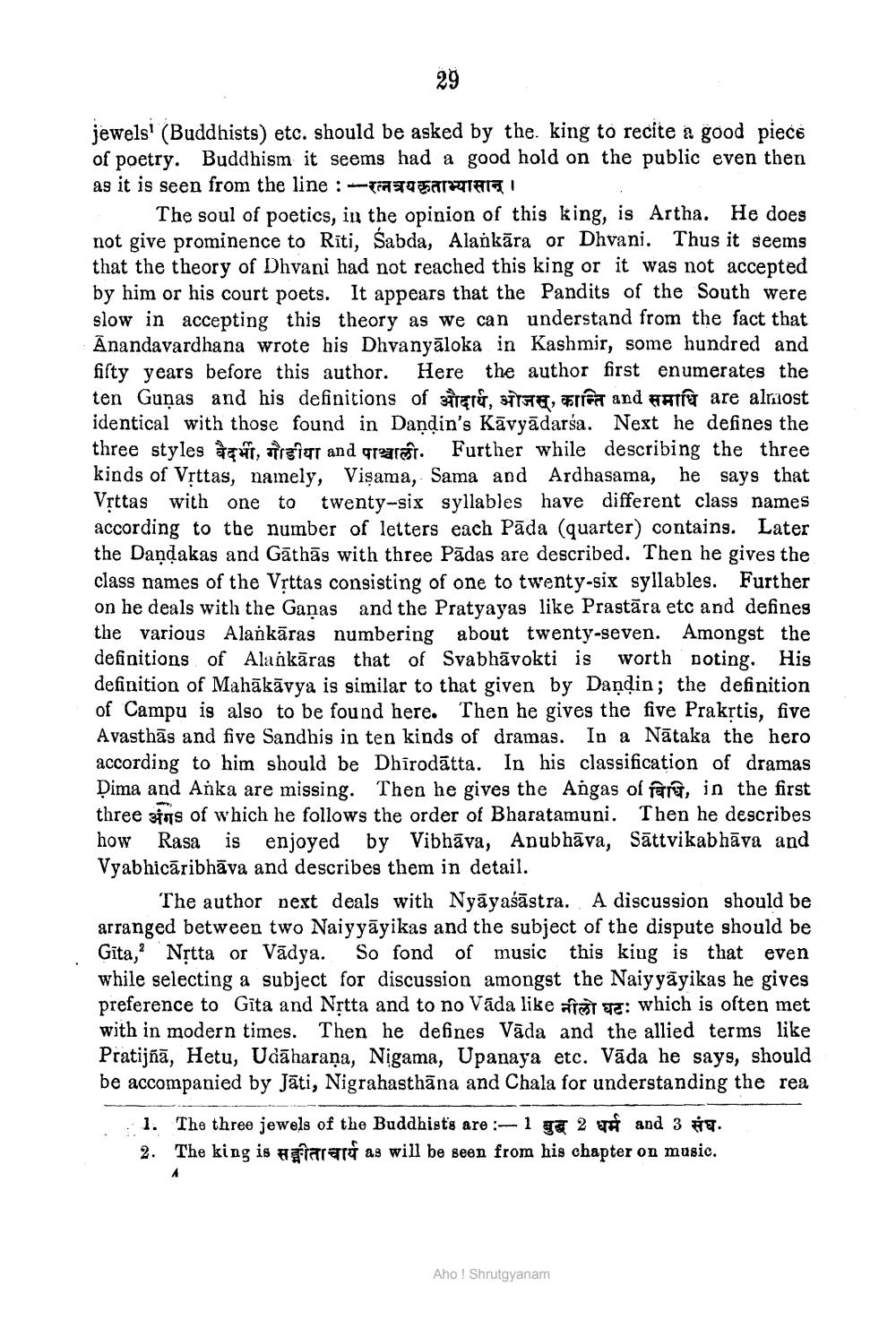________________
29
jewels' (Buddhists) etc. should be asked by the king to recite a good piece of poetry. Buddhism it seems had a good hold on the public even then as it is seen from the line : रत्नत्रय कृताभ्यासान् ।
The soul of poetics, in the opinion of this king, is Artha. He does not give prominence to Rīti, Śabda, Alankara or Dhvani. Thus it seems that the theory of Dhvani had not reached this king or it was not accepted by him or his court poets. It appears that the Pandits of the South were slow in accepting this theory as we can understand from the fact that Anandavardhana wrote his Dhvanyaloka in Kashmir, some hundred and fifty years before this author. Here the author first enumerates the ten Gunas and his definitions of औदार्य, ओजस्, कान्ति and समाधि are almost identical with those found in Dandin's Kavyadarśa. Next he defines the three styles वैदर्भी, गौडीया and पाश्चाली. Further while describing the three kinds of Vṛttas, namely, Visama, Sama and Ardhasama, he says that Vṛttas with one to twenty-six syllables have different class names according to the number of letters each Pada (quarter) contains. Later the Dandakas and Gathas with three Pādas are described. Then he gives the class names of the Vṛttas consisting of one to twenty-six syllables. Further on he deals with the Ganas and the Pratyayas like Prastara etc and defines the various Alankaras numbering about twenty-seven. Amongst the definitions of Alankaras that of Svabhāvokti is worth noting. His definition of Mahākāvya is similar to that given by Dandin; the definition of Campu is also to be found here. Then he gives the five Prakṛtis, five Avasthas and five Sandhis in ten kinds of dramas. In a Nataka the hero according to him should be Dhirodatta. In his classification of dramas Dima and Anka are missing. Then he gives the Angas of far, in the first three is of which he follows the order of Bharatamuni. Then he describes how Rasa is enjoyed by Vibhava, Anubhava, Sattvikabhāva and Vyabhicaribhava and describes them in detail.
The author next deals with Nyāyaśāstra. A discussion should be arranged between two Naiyyāyikas and the subject of the dispute should be Gita, Nṛtta or Vadya. So fond of music this king is that even while selecting a subject for discussion amongst the Naiyyayikas he gives preference to Gita and Nṛtta and to no Vada like at: which is often met with in modern times. Then he defines Vāda and the allied terms like Pratijñā, Hetu, Udāharaṇa, Nigama, Upanaya etc. Vada he says, should be accompanied by Jati, Nigrahasthana and Chala for understanding the rea
1. The three jewels of the Buddhists are:- 1 g 2 and 3 . 2. The king is Harar as will be seen from his chapter on music.
A
Aho! Shrutgyanam




